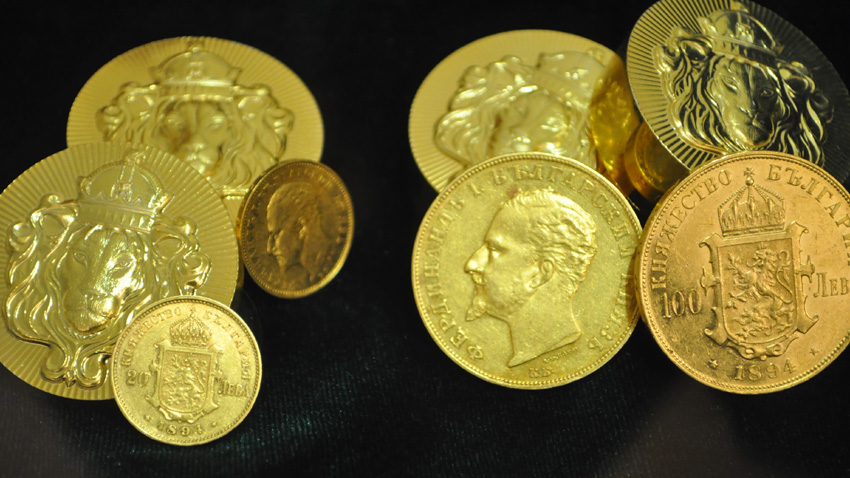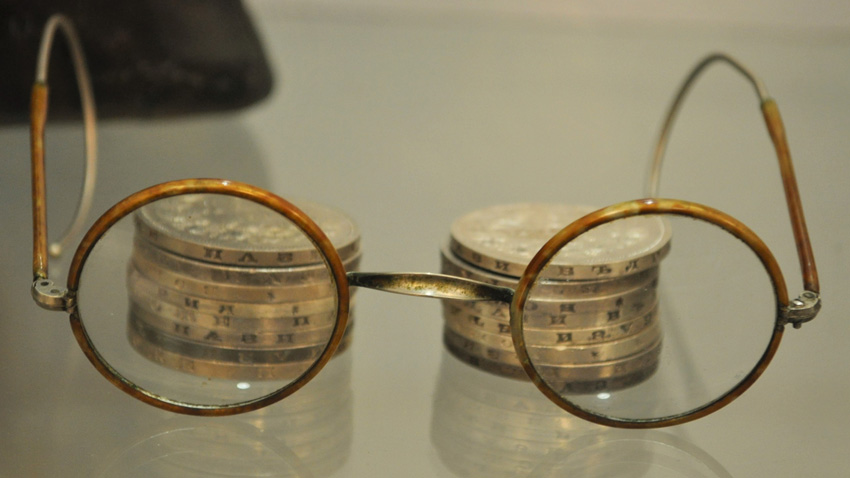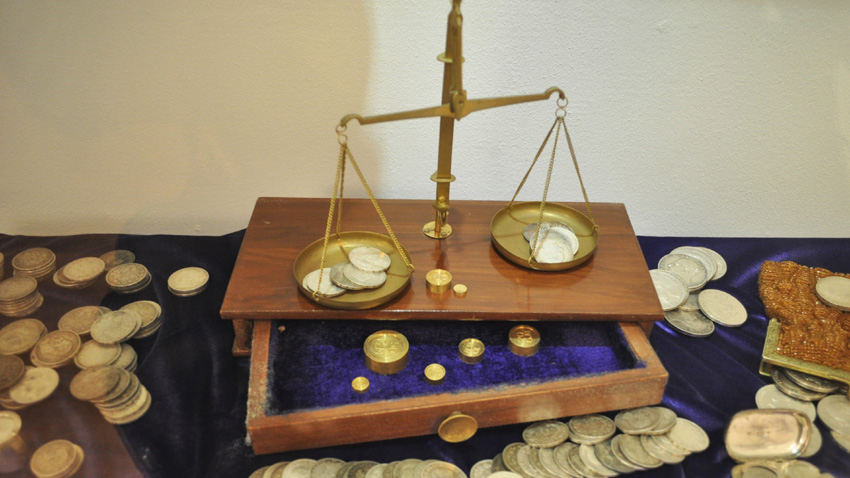The city of Veliko Tarnovo is host of a valuable numismatic exhibition which attracts the attention not only of collectors and experts but also of history lovers. The collection of gold and silver coins minted and used in the period 1882-1937 follows the history of the young Bulgarian state in a very dynamic period.
There are more that 6,000 exhibits on display, collected over a period of 20 years by Bulgarian Deyan Spiridonov, who is living in the U.S. The exhibition is hosted in Veliko Tarnovo’s emblematic Hadji Nikoli Inn – a building with rich history and a monument of culture. The unique coins will remain on display until February 2017. The collection brings us back to the beginning of the Bulgarian lev in a period when the young Bulgarian state was taking its deserved place in the community of European peoples after 5 centuries of Ottoman oppression. Together with the flag, the coat of arms and the national anthem, the Bulgarian lev was a symbol of the Bulgarian sovereignty and a source of pride for Bulgarians. Associate professor Konstantin Dochev from the Veliko Tarnovo branch of the Archaeological Institute of the Bulgarian Academy of Sciences told us moreл

“In 1881 the law for the right to mint coins entered into force, and in 1882 minting of the first copper – nickel coins started. In 1883 the first silver coins entered into circulation. A year later the first emissions of gold coins emerged and it is still admired for its elegance. However, these gold pieces had purely propaganda goals associated with the regained state independence. These days Bulgaria is on a path to entering the Eurozone but shortly after the Liberation, Bulgarian rulers decided to join the Latin Monetary Union. As a result, every Bulgarian of that time was free to travel, study and buy goods across Europe.”

Joining the Latin Monetary Union and adopting the French franc as a uniform currency gave a serious boost to the Bulgarian economy. The Bulgarian lev was fully equivalent to other Western European currencies and reached countries like Australia, Canada, Russia, England, India and even distant Japan. Different symbols were engraved on Bulgarian coins. The most common are the Christian cross and the lion, as a symbol of power and strength. Looking closely, we see images of the Bulgarian flag and floral motifs. And of course the famous Bulgarian rose is also seen. Coins from the time of Tsar Boris III are finely engraved with image of the flower.
But where were these magnificently crafted coins minted?
"Engravers were foreigners,” associate professor Dochev says. “The first emissions were minted in Birmingham, then in St. Petersburg. Later when economic cooperation between Bulgaria and Austria-Hungary became very active, almost all Bulgarian coin emissions started to be minted there. Engravers were very good. They were mostly French and Austrians. For example, on the large silver 5-lev coins we can see the Bulgarian coat of arms and the Bulgarian flag. If one used magnifying glass they could read ‘Bulgaria,’ written on the flag. This shows the great skills of the engravers back then.”

The exhibition in the halls of Hadji Nikoli Inn provides a nostalgic trip to the times of post-liberation Bulgaria, where national self-confidence was high. Information boards make people acquainted not only with the content of precious metals in the coins, but with the economic environment in the period 1882 -1937, marked by times of prosperity but also by national catastrophes and total collapse of the currency. As the saying goes, there is nothing new under the sun!
English: Alexander Markov
Photos: Veneta NikolovaOn January 17, the Orthodox Church honors the memory of St. Anthony the Great – a zealous advocate of Christianity. At an advanced age, he took part in the Church's struggle against the Arian heresy. Anthony got into an open dispute with the..
His Eminence Metropolitan Anthony of Western and Central Europe and BNR Director General Milen Mitev signed a Memorandum of Cooperation at the headquarters of the Bulgarian Orthodox Church Diocese of Western and Central Europe in the German capital,..
The Aprilov National High School in the beautiful Bulgarian town of Gabrovo nestled in the foot of the Balkan Range celebrates its 190th anniversary in 2025. Following in the traditions of the Gabrovo Mutual School – the first secular school in..
Vasil Levski is a Bulgarian revolutionary and national hero who fought for the Liberation of Bulgaria from the Ottoman Empire. He is an..
152 years after Bulgaria lost its beloved son and advocate for a free, independent and tolerant state – Vasil Levski, his personality continues to excite..

+359 2 9336 661
